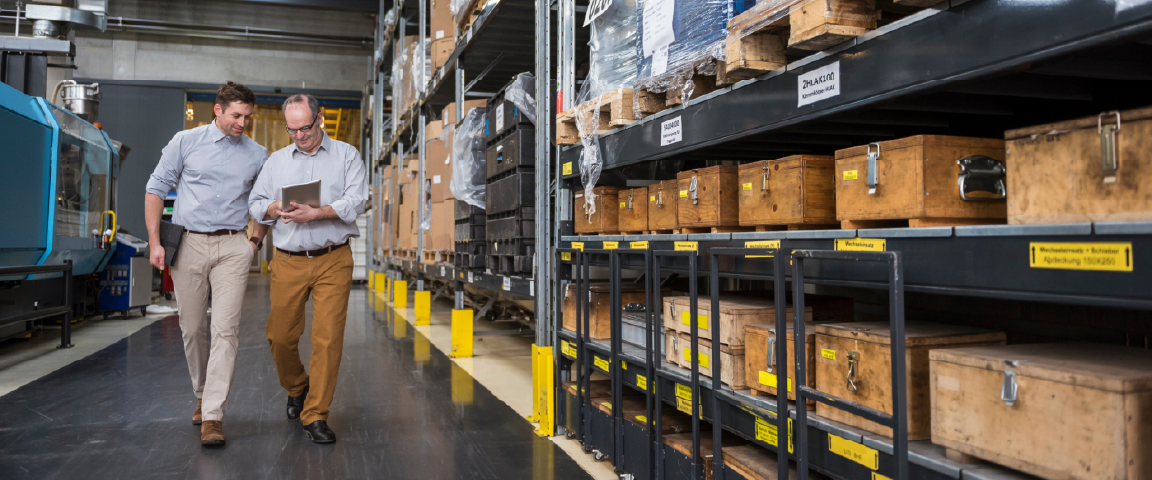
Logistics isn’t just about moving boxes from point A to point B — it’s about keeping your business running smoothly, your customers happy and your costs in check. But when it comes to managing your supply chain, you face a big decision: do you handle everything in-house or do you bring in a third-party logistics (3PL) provider to take the load off?
It’s a common question, and the answer really depends on your specific needs. Let’s dive into what differentiates 3PLs like us from internal logistics and explore the factors you should consider when deciding between the two.
What Is a 3PL?
A third-party logistics (3PL) provider is an external company that offers logistics and supply chain management services to businesses. These services can include transportation, warehousing, order fulfillment, freight brokerage and more. Rather than investing in fleets, warehouses and/or logistics personnel, companies can outsource these functions to a 3PL.
So, what’s the key difference between in-house logistics and a 3PL? The level of control and flexibility. In-house logistics offers direct oversight and customization, while a 3PL provides cost-efficiency, industry expertise and access to advanced logistics technology.
The right choice really depends on the needs of your business. If your company has highly specialized requirements, you may favor in-house logistics; if your company is looking for scalability and efficiency, you’ll probably want to turn to a 3PL.
Types of 3PLs and Their Services
3PLs offer a wide range of services, each addressing different challenges. Some common types of 3PL services include:
- Transportation Management: Freight brokerage, managed transportation and carrier coordination
- Warehousing & Distribution: Storage, inventory management and order fulfillment
- Freight Forwarding: International shipping and customs brokerage
- Packaging: Custom packaging, labeling and order assembly
- Technology & Analytics: Transportation Management Systems (TMS), real-time tracking and data analytics
Remember, outsourcing doesn’t have to be all or nothing. There’s a continuum of services, and whether you choose to outsource certain needs or all of your operations is up to you.
Comparing a 3PL to an Internal Transportation Team
It’s important to understand the trade-offs between managing logistics in-house and partnering with a third-party provider to know which option best supports your company’s growth.
When Is a 3PL Company The Right Choice for Your Business?
Outsourcing to a 3PL makes sense when your business needs:
- Cost-efficiency and time savings: A 3PL can take advantage of economies of scale, reducing freight costs and improving delivery speed. Managing logistics internally, on the other hand, requires significant investment in infrastructure and personnel.
- Broad and deep industry expertise: A good 3PL provider has relationships with multiple entities, understands market trends and knows how to navigate complex shipping challenges.
- Access to the latest technology: Logistics technology, like TMS platforms and AI-driven analytics, helps optimize routes, track shipments in real-time and improve supply chain efficiency.
- Integration and visibility: Modern 3PLs can provide integrated solutions for eCommerce and retail businesses by linking inventory systems and order management platforms for increased visibility. Plus, with the help of third-party logistics, businesses can monitor stock levels in real time, set up automatic reordering and more.
When Keeping Logistics In-House May Seem Like the Right Choice
Choosing to manage logistics internally makes sense when your business needs to:
- Maintain control of carrier selection and other key details: Direct oversight can offer a sense of control, but the right logistics partner can deliver transparency and flexibility while easing the operational burden.
- Customize logistics solutions: If your model involves specialized services, in-house teams may seem more adaptable. However, many third-party providers now offer tailored solutions designed to scale with your needs.
- Personalize the customer experience: Managing the customer journey end-to-end can feel more seamless internally, but outsourcing doesn’t have to mean losing that personal touch, especially with partners who prioritize customer-centric strategies.
Key Questions To Ask For Both Scenarios
Internal Team:
- Do we understand the cost advantages of outsourcing?
- What other competitive advantages are expected from outsourcing?
- Do internal processes need to be fixed before outsourcing?
- Do we have the capability to manage the 3PL?
External Provider:
- Does the third party provide competencies we are lacking internally?
- Does the third party have a portfolio of clients that can be leveraged to gain efficiencies for our business?
- What best practices can the provider quickly apply to our business?
Making the Right Logistics Decision
Deciding between in-house logistics and a 3PL requires careful consideration of financial, operational and strategic factors. Consider your company’s growth trajectory, resource availability and service requirements. Asking the right questions, both internally and of potential 3PL partners, can go a long way toward determining the best path forward.